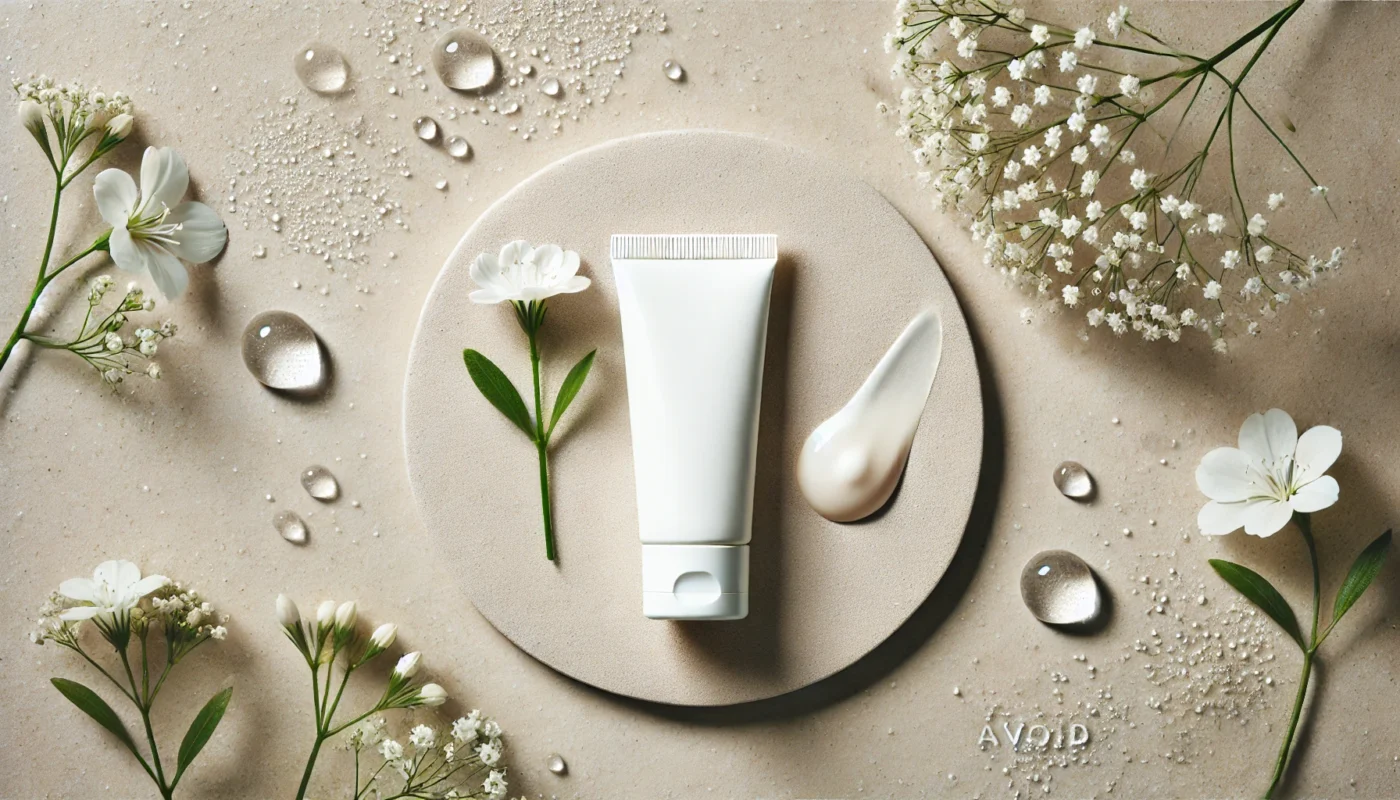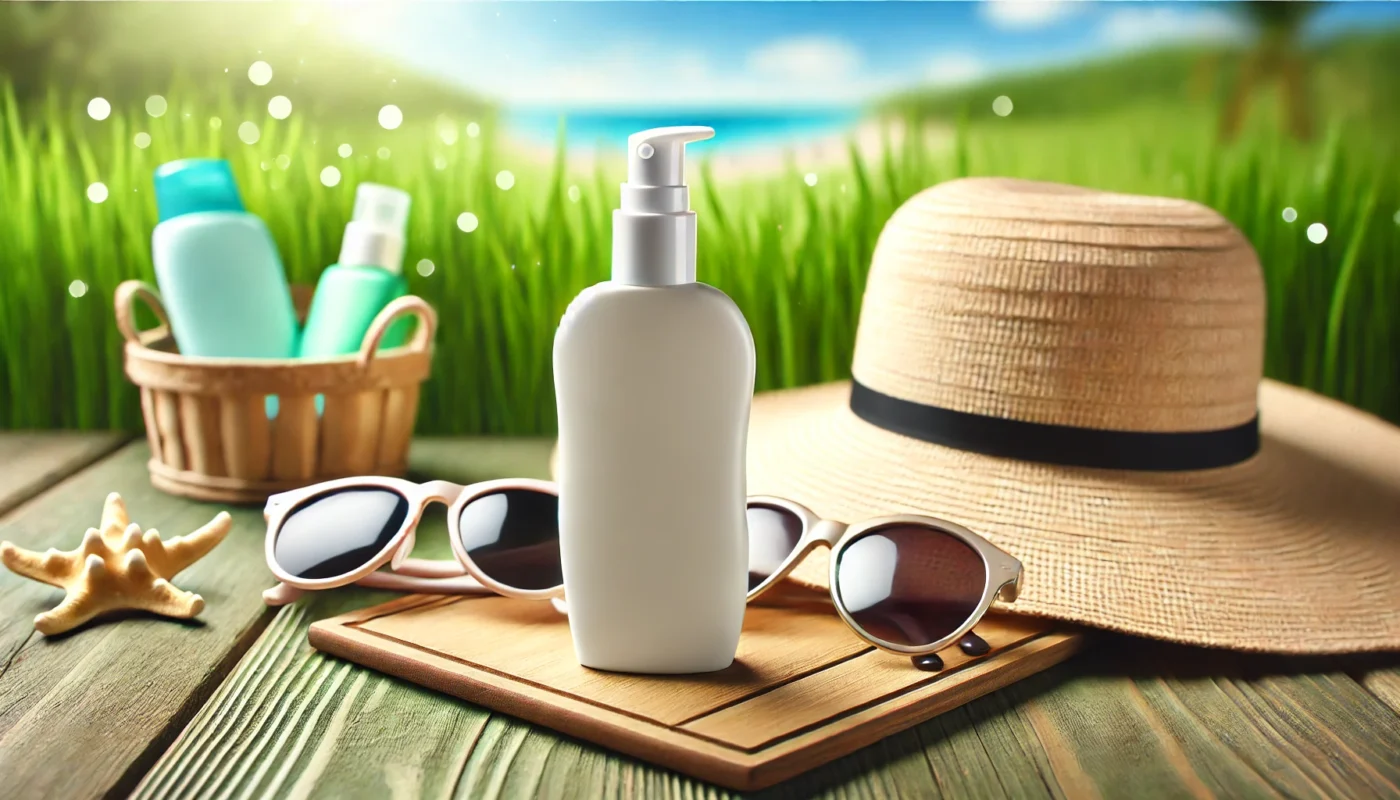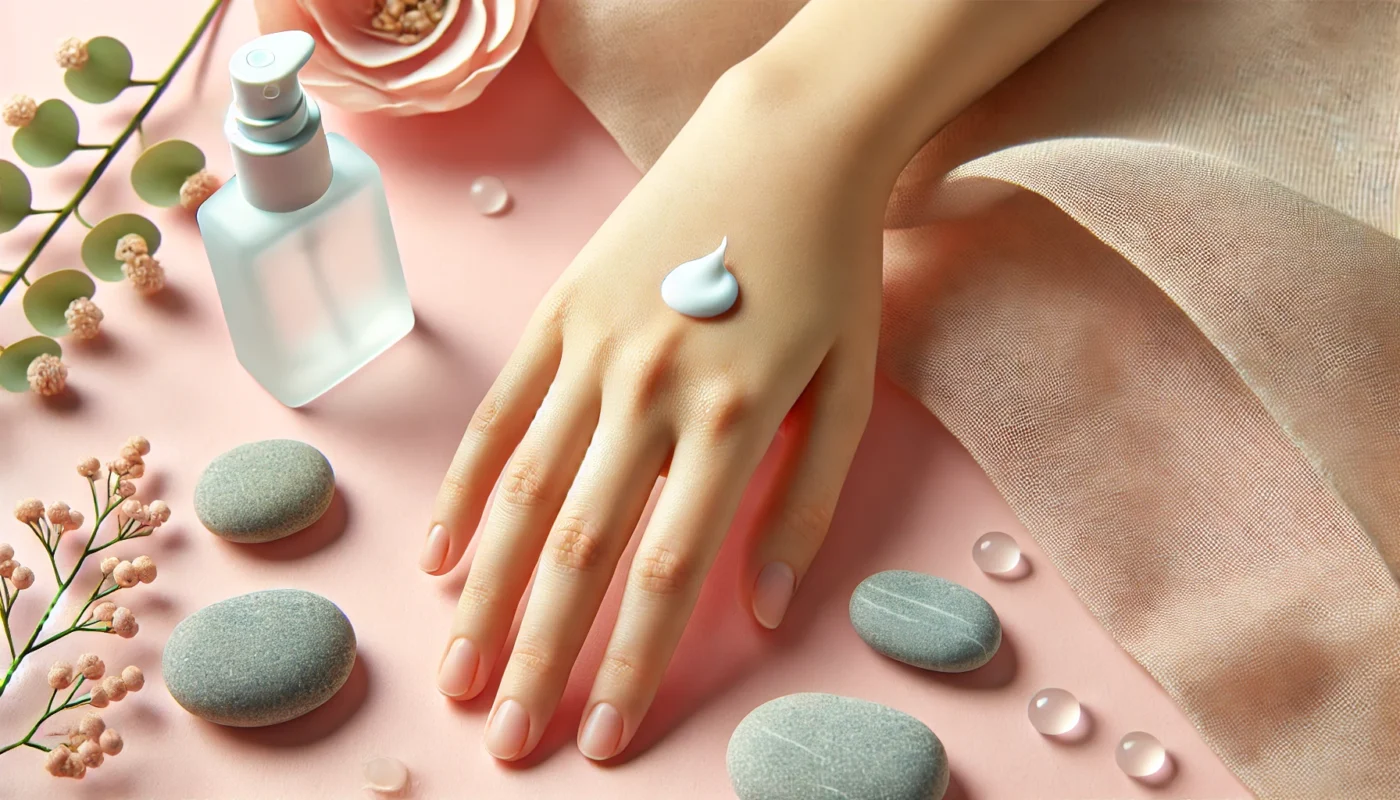The primary function of sunscreen is to protect your skin from the harmful effects of ultraviolet (UV) radiation. However, many traditional sunscreens can cause irritation, especially when applied to sensitive facial skin. This irritation often results in stinging eyes, which can be particularly uncomfortable and even deter people from using sunscreen altogether.
You may also like: Essential Tips for Sun Protection Daily
Preventing Eye Irritation
Eye irritation from sunscreen can be a significant deterrent for regular use, leading to inconsistent protection and increased risk of sun damage. Tear-free formulations address this concern by using gentle ingredients, making them more suitable for sensitive areas. By minimizing irritation, these sunscreens encourage daily application, ensuring consistent protection.
Enhancing Skincare Routine
Incorporating tear-free sunscreen into your routine enhances your overall skincare regimen. These sunscreens protect without disrupting the skin’s natural barrier, allowing other skincare products to work effectively. When combined with other skincare steps, tear-free sunscreens can help maintain a healthy complexion and prevent premature aging.
Encouraging Consistent Use
Comfortable sunscreen application promotes consistent daily use, a critical factor in achieving optimal skin protection. Tear-free options remove the discomfort of stinging eyes, making it easier to incorporate sunscreen into your morning routine. Consistent use helps prevent cumulative sun damage, reducing the risk of skin cancer and other UV-related issues.
Understanding the Formulation
Tear-free sunscreens are specifically formulated to be gentle on the eyes. They typically exclude ingredients that are known to cause stinging or irritation. Understanding the formulation of these products is essential for making an informed choice.
Exclusion of Irritants
Tear-free sunscreens carefully exclude common irritants found in many other sunscreens. Ingredients like avobenzone and oxybenzone, often found in chemical sunscreens, are known to cause stinging. Instead, tear-free formulations opt for safer, more tolerable ingredients that provide effective UV protection without discomfort.
Use of Gentle Ingredients
In place of harsh chemicals, tear-free sunscreens incorporate gentle, skin-friendly ingredients. These formulations often include soothing agents such as aloe vera and chamomile, known for their calming properties. Such ingredients not only prevent eye irritation but also nurture and protect sensitive skin areas.
Balancing Protection and Comfort
The challenge in formulating tear-free sunscreens lies in balancing UV protection with user comfort. By utilizing advanced technology and innovative ingredient combinations, manufacturers can create products that shield the skin effectively while remaining gentle enough for daily use. This balance ensures that users can stay protected without sacrificing comfort.
Key Ingredients in Tear-Free Sunscreens
- Zinc Oxide and Titanium Dioxide: These are mineral-based ingredients that are less likely to irritate the skin and eyes compared to chemical sunscreens. They work by sitting on top of the skin and deflecting UV rays.
- Zinc Oxide: Known for its broad-spectrum protection, zinc oxide provides a physical barrier that reflects UVA and UVB rays. It’s suitable for sensitive skin types due to its gentle nature.
- Titanium Dioxide: Often used in conjunction with zinc oxide, titanium dioxide offers additional protection without causing irritation. It’s lightweight and blends easily into the skin, making it ideal for facial application.
- Aloe Vera and Chamomile: These soothing agents are often included to help calm sensitive skin and reduce irritation.
- Aloe Vera: Renowned for its healing properties, aloe vera hydrates and soothes the skin, reducing any potential irritation from sun exposure.
- Chamomile: Known for its anti-inflammatory benefits, chamomile helps calm the skin, making it less prone to redness and irritation.
- Absence of Alcohols and Fragrances: Many tear-free sunscreens avoid these ingredients, which can be drying and irritating, especially around the delicate eye area.
- Alcohol-Free: By omitting alcohol, tear-free sunscreens prevent the drying effects that can exacerbate irritation around the eyes.
- Fragrance-Free: Removing fragrances reduces the risk of allergic reactions and ensures a gentler formula suitable for sensitive skin.

How to Choose the Best Tear-Free Sunscreen for You
Choosing the right sunscreen involves considering several factors, including your skin type, lifestyle, and specific skin concerns.
Consider Your Skin Type
- Sensitive Skin: Look for products labeled hypoallergenic and free from fragrances and preservatives.
- Hypoallergenic Options: These formulations minimize potential allergens, making them ideal for individuals with reactive skin.
- Preservative-Free: Avoiding preservatives helps reduce the risk of irritation, providing a safer choice for delicate skin.
- Oily or Acne-Prone Skin: Opt for non-comedogenic formulas that won’t clog pores.
- Oil-Free Formulas: Lightweight, oil-free sunscreens help control excess sebum, reducing the risk of breakouts.
- Non-Comedogenic Ingredients: Ensure that the product won’t block pores, which is crucial for preventing acne flare-ups.
- Dry Skin: Seek out sunscreens with added moisturizers like hyaluronic acid or glycerin.
- Hydrating Ingredients: Look for formulations enriched with hydrating agents that lock in moisture and prevent dryness.
- Nourishing Benefits: Ingredients like glycerin provide additional nourishment, supporting the skin’s natural moisture barrier.
Lifestyle and Application
If you spend a lot of time outdoors or participate in water activities, water-resistant formulas are essential. They provide longer-lasting protection even when sweating or swimming.
- Water-Resistant Features: Choose sunscreens that maintain their protective barrier during water exposure, ensuring continued effectiveness.
- Easy Reapplication: Opt for products that are easy to reapply, especially if you engage in outdoor sports or activities.
Broad-Spectrum Protection
Ensure your sunscreen offers broad-spectrum protection, which means it shields against both UVA and UVB rays. UVA rays penetrate deeper into the skin and contribute to premature aging, while UVB rays are responsible for sunburn.
- UVA Protection: Focus on products that provide robust defense against UVA rays to prevent long-term skin damage.
- UVB Defense: Ensure the sunscreen effectively blocks UVB rays, reducing the risk of immediate sunburn and skin damage.
Top Tear-Free Sunscreen Products
Neutrogena Pure & Free Baby Sunscreen
Despite being marketed for babies, this sunscreen is excellent for adults with sensitive skin. It uses 100% naturally sourced ingredients and is free from dyes and fragrances.
- Gentle Formula: Specifically designed for sensitive skin, making it suitable for all ages.
- Chemical-Free: Relies on mineral-based UV filters, ensuring a tear-free experience.
La Roche-Posay Anthelios Melt-in Milk Sunscreen
This sunscreen is renowned for its gentle formulation and effectiveness. It provides robust UVA/UVB protection and is infused with antioxidants to combat free radicals.
- Antioxidant Enriched: Contains ingredients that protect against environmental damage, enhancing skin health.
- Smooth Application: The melt-in milk texture ensures easy application and a non-greasy finish.
Blue Lizard Australian Sunscreen
Known for its mineral-based formula, Blue Lizard is a trusted brand for those seeking a tear-free experience. It’s water-resistant and offers excellent sun protection without the use of harsh chemicals.
- Australian Standard: Meets stringent Australian standards for UV protection, ensuring reliable defense against the sun.
- Eco-Friendly Ingredients: The formulation is safe for both the skin and the environment, making it a responsible choice.
Applying Sunscreen Effectively
Proper application is crucial to ensure maximum protection and minimize irritation.

Step-by-Step Application Guide
- Cleanse Your Face: Start with a clean face to remove dirt and oil, which can interfere with sunscreen absorption.
- Effective Cleansing: Use a gentle cleanser suited to your skin type to prepare your skin for optimal sunscreen performance.
- Toning Benefits: Follow cleansing with a toner to balance the skin’s pH and enhance product absorption.
- Apply Moisturizer: If your skin is dry, use a moisturizer before applying sunscreen. This can also help prevent any potential irritation.
- Layering Technique: Ensure that the moisturizer is fully absorbed before sunscreen application to maximize efficacy.
- Moisture Lock: Choose a lightweight moisturizer that complements the sunscreen’s texture and formula.
- Use the Right Amount: A nickel-sized amount is generally sufficient for the face. Ensure even coverage, paying special attention to areas that are often missed, like the ears and neck.
- Coverage Consistency: Apply in gentle, upward strokes to ensure even distribution across the skin.
- Attention to Detail: Don’t forget often-overlooked areas such as the hairline and under the chin.
- Reapply Regularly: Reapply every two hours, or more often if you’re swimming or sweating.
- Regular Reapplication: Set reminders to maintain consistent protection throughout the day.
- Convenient Formats: Consider using spray or stick formats for quick and easy reapplication on the go.
The Science Behind Sunscreens
Understanding the science of sunscreens can help you appreciate their importance and effectiveness.
How Sunscreens Work
Sunscreens function either by absorbing or reflecting UV radiation. Chemical sunscreens absorb UV rays and convert them into heat, which is then released from the skin. In contrast, physical (or mineral) sunscreens reflect UV rays away from the skin.
- Chemical Absorption: Understand the process of chemical filters and how they transform UV rays into harmless energy.
- Physical Reflection: Learn about the barrier effect of mineral sunscreens and their immediate protection upon application.
The Importance of SPF
SPF, or Sun Protection Factor, measures how well a sunscreen protects against UVB rays. An SPF of 30, for instance, indicates that it would take 30 times longer for your skin to burn than if you weren’t wearing any sunscreen.
- SPF Ratings: Explore the significance of different SPF levels and their suitability for various skin types and conditions.
- Comprehensive Coverage: Recognize the importance of using a broad-spectrum product to cover both UVA and UVB protection.
Real-Life Tips for Sunscreen Use
- Year-Round Use: Sunscreen should be applied daily, even on cloudy days, as UV rays can penetrate clouds.
- Seasonal Awareness: Understand the need for sunscreen in all seasons to combat cumulative UV exposure.
- Weather Considerations: Learn how factors like altitude and reflection affect UV intensity.
- Layering Products: Apply sunscreen after any serums or treatments, but before makeup.
- Order of Application: Master the correct sequence of skincare products to maximize each layer’s effectiveness.
- Seamless Integration: Discover tips for incorporating sunscreen into your existing skincare routine without disruption.
- Test New Products: Patch test any new sunscreen on a small area of your skin to check for reactions before applying it to your face.
- Sensitivity Testing: Ensure compatibility by conducting a patch test to prevent unexpected skin reactions.
- Gradual Introduction: Ease new products into your routine to monitor how your skin responds over time.

Conclusion
Choosing the best tear-free face sunscreen is an essential step in maintaining healthy skin and preventing sun damage. By understanding the ingredients and formulation, considering your skin type, and applying it correctly, you can enjoy the sun safely and comfortably. With the right product, you can protect your skin without the discomfort of stinging eyes, allowing you to focus on your health and wellness journey. Remember, the best sunscreen is the one you will use consistently.
Stay sun-safe and enjoy your time outdoors with peace of mind, knowing your skin is well-protected. Embrace the benefits of tear-free sunscreens, and make them a staple in your daily skincare routine to ensure long-lasting skin health.
Further Reading:
A Dermatologist’s Ultimate Guide to the Best Sunscreens for Kids
5 Sunscreens For Your Face That Won’t Burn Your Eyes
The 23 Best Non-Greasy Sunscreens, Vetted by a Former Sunscreen Skeptic
tear free sunscreen, face sunscreen, no sting sunblock, sensitive skin, sunscreen for adults, sun protection, skincare routine, UV protection, mineral sunscreen, tear-free formulation, best sunscreen, sun safety, everyday sunscreen, healthy skin, anti-aging skincare.
Important Note: The information contained in this article is for general informational purposes only, and should not be construed as health or medical advice, nor is it intended to diagnose, prevent, treat, or cure any disease or health condition. Before embarking on any diet, fitness regimen, or program of nutritional supplementation, it is advisable to consult your healthcare professional in order to determine its safety and probable efficacy in terms of your individual state of health.
Regarding Nutritional Supplements Or Other Non-Prescription Health Products: If any nutritional supplements or other non-prescription health products are mentioned in the foregoing article, any claims or statements made about them have not been evaluated by the U.S. Food and Drug Administration, and such nutritional supplements or other health products are not intended to diagnose, treat, cure, or prevent any disease.

